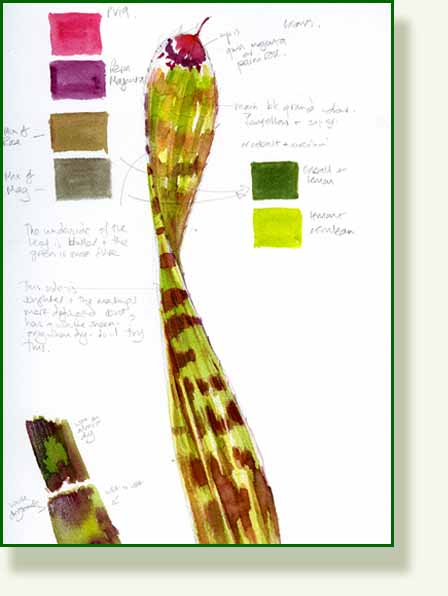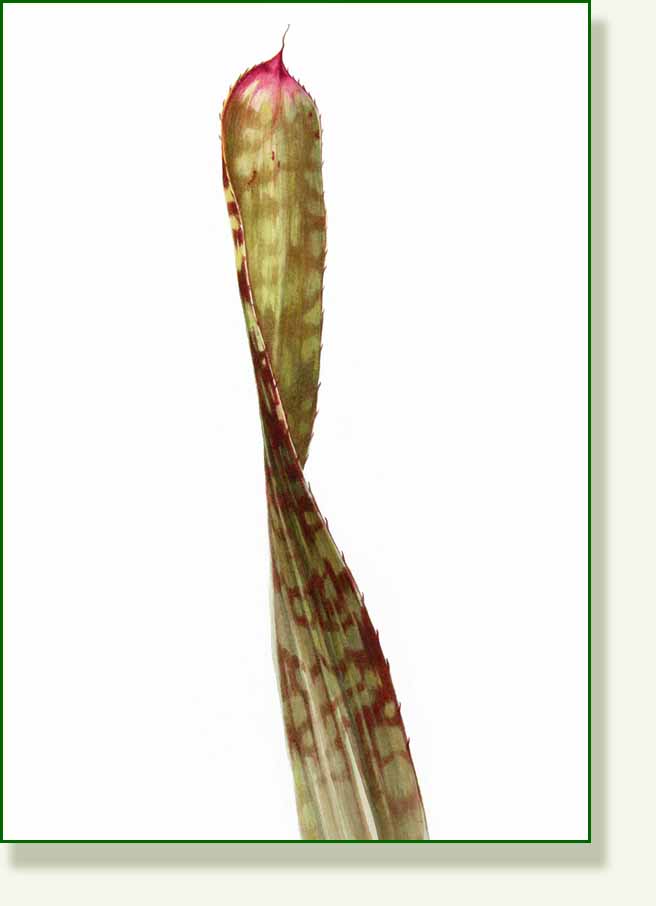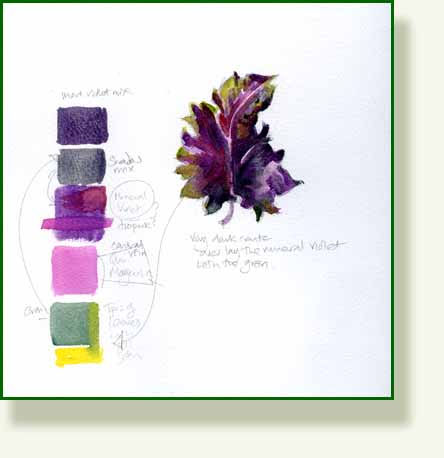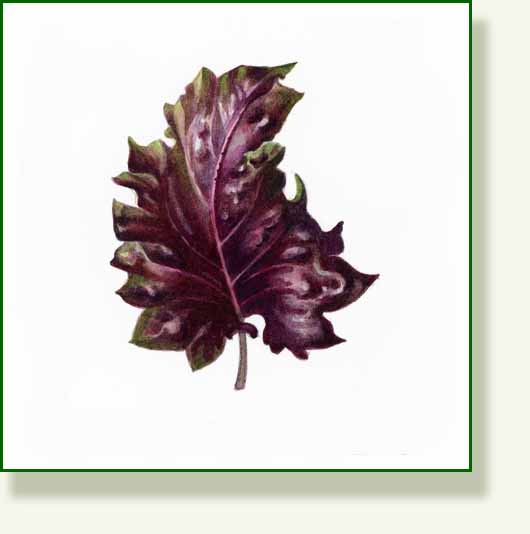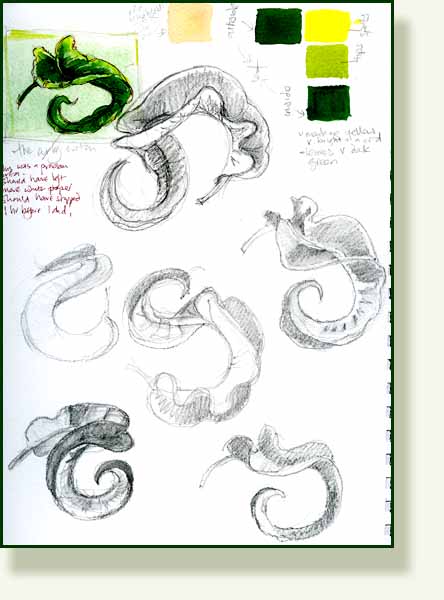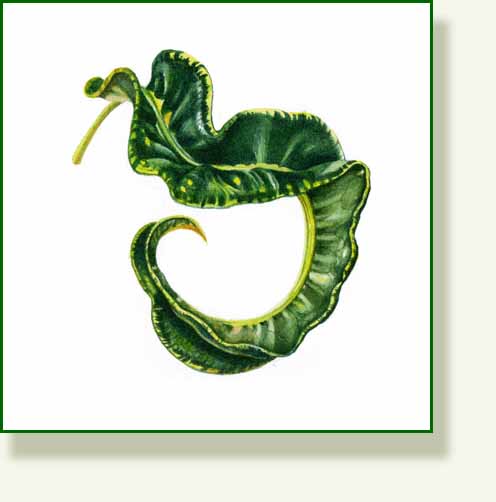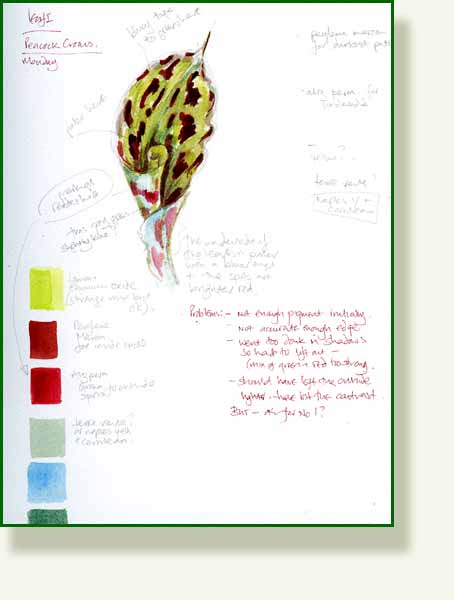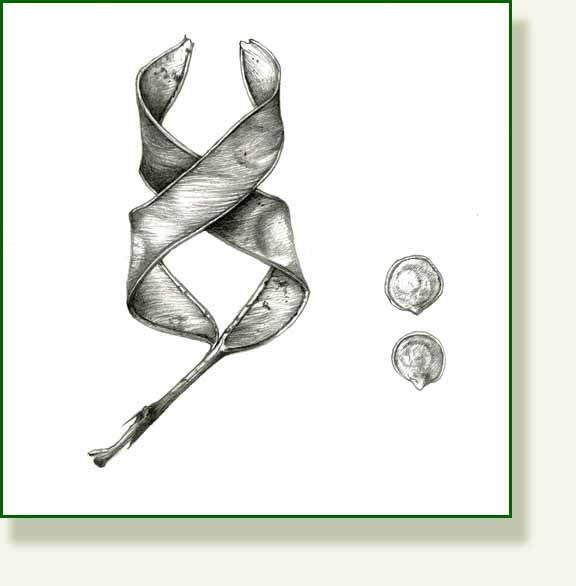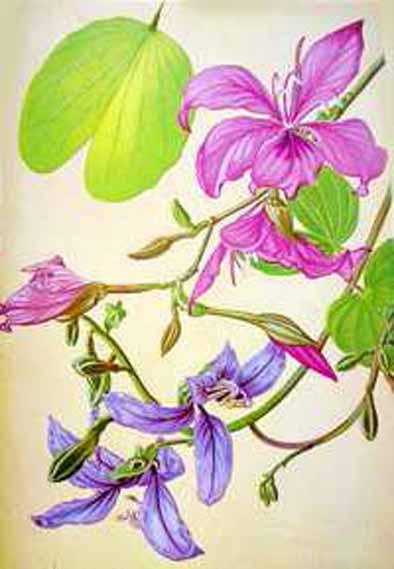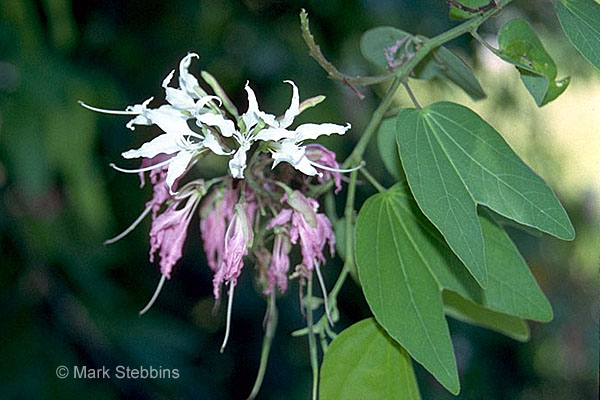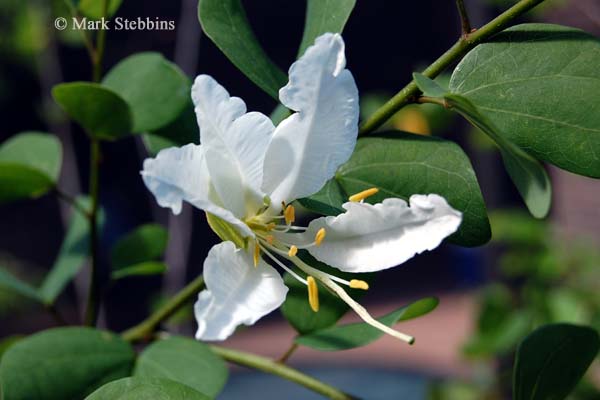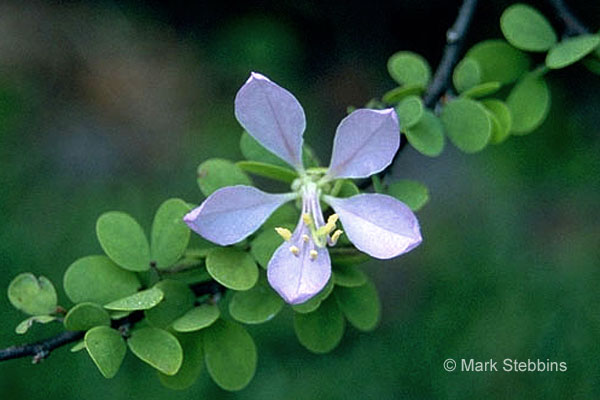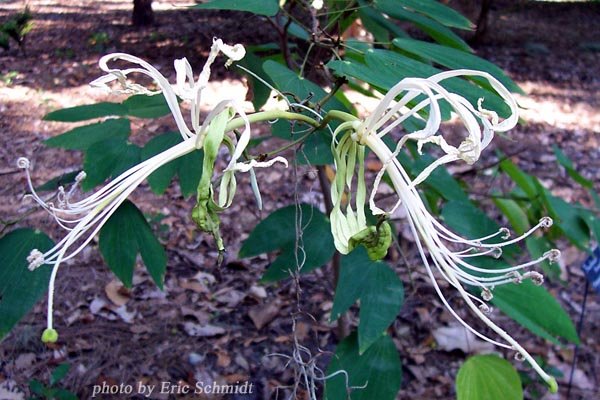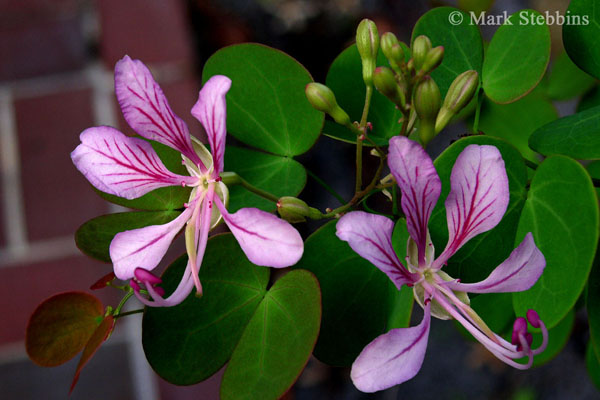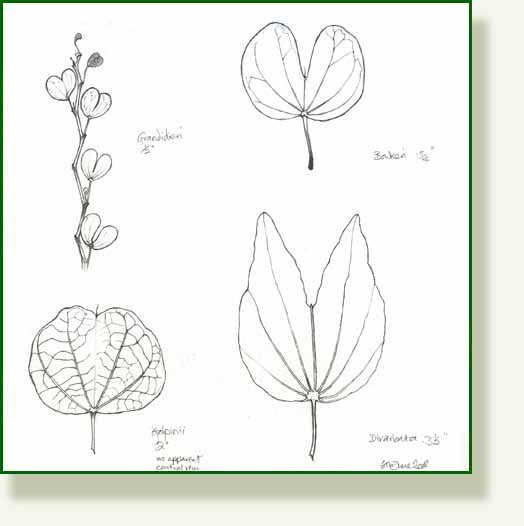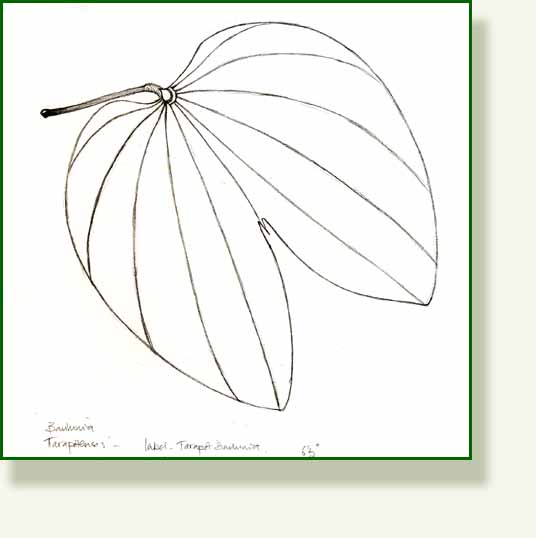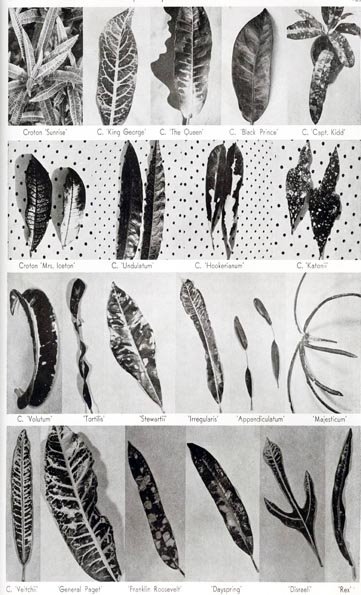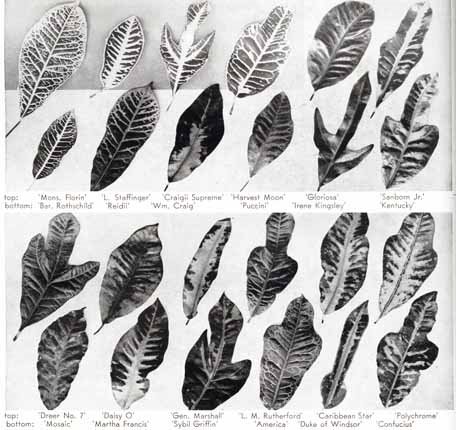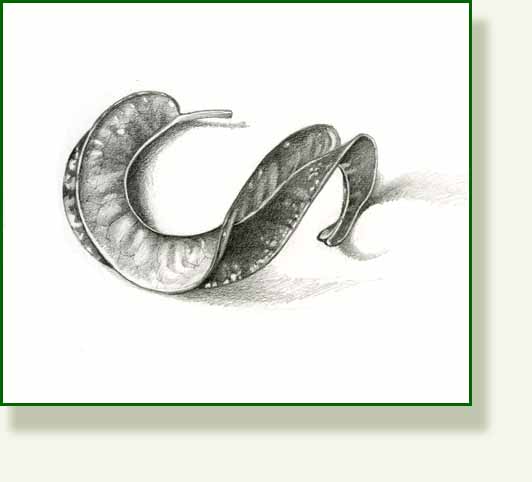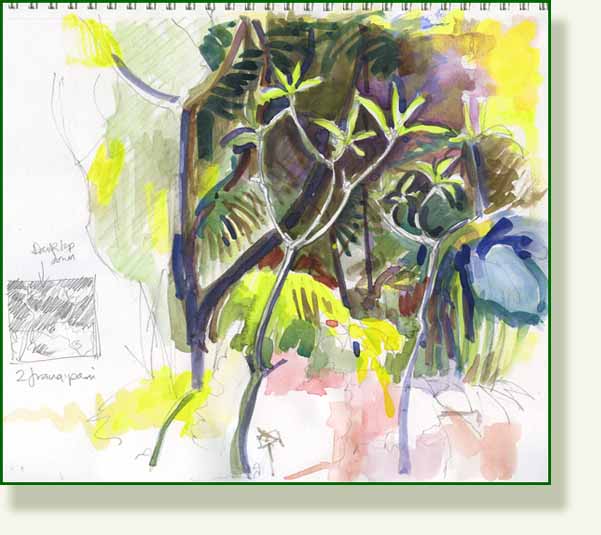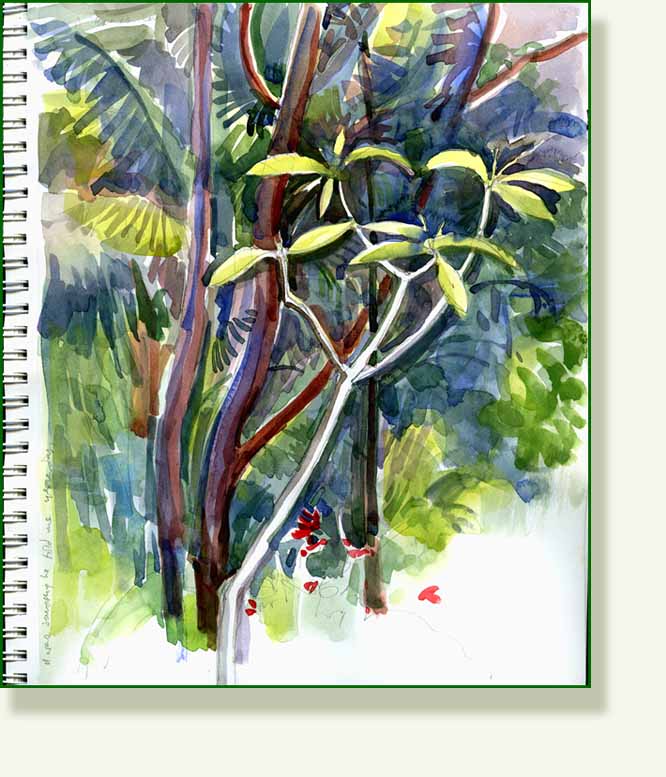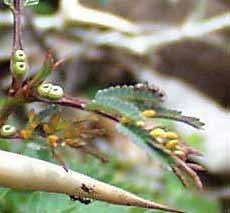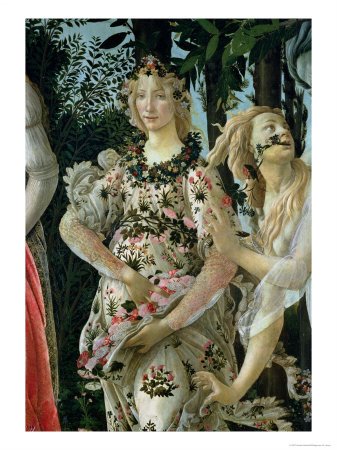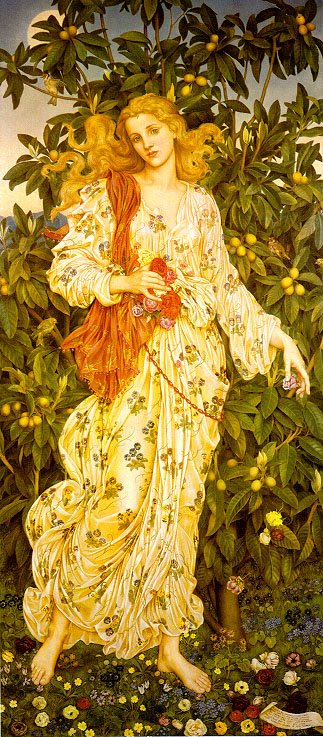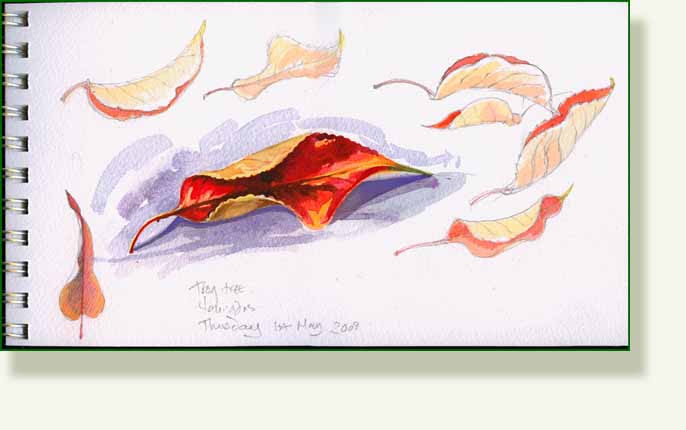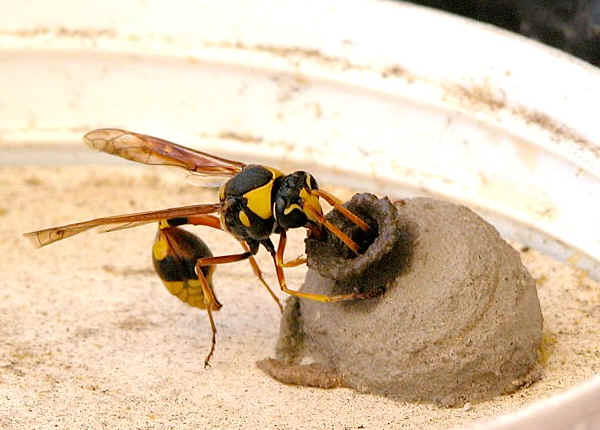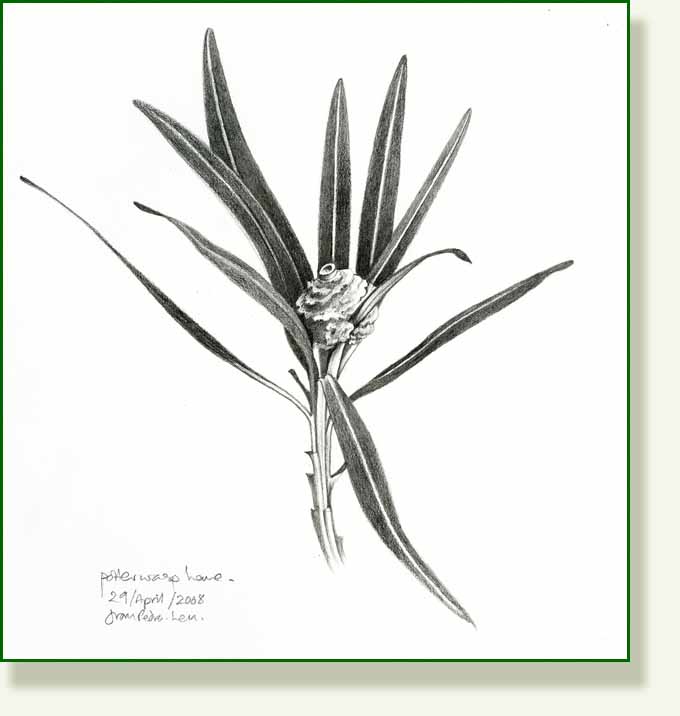Today was my last brief trip to Leu Gardens for at least 3 weeks. I will miss my visits, both for the people and the plants. However I have a little thorny twig today from the Bull’s Horn Acacia tree, acacia sphaerocephala which looks nothing much on its own, but just a little research reveals one of those plants with an extraordinary relationship with insects. This time with ants.
While supervising a gold mine in Nicaragua in 1868, Thomas Belt, a British engineer and keen naturalist observed that a particular acacia tree seemed to be colonised with ants, so much so that if he touched the tree and disturbed their colony, the ants would race out and bite him ferociously. Simply put, Belt formed a theory that the plant and the ants seemed to rely on each other, forming a mutualistic relationship, which he published, to some scorn at the time, in 1874. Here is a section from his book “The Naturalist in Nicaragua” which is written in such a delightful way.
“The branches and trunk of the acacia are covered with strong curved spines, set in pairs, from which it receives the name of the bull’s-horn thorn, they having a very strong resemblance to the horns of that quadruped. These thorns are hollow, and are tenanted by ants, that make a small hole for their entrance and exit near one end of the thorn, and also burrow through the partition that separates the two horns; so that the one entrance serves for both. Here they rear their young, and in the wet season every one of the thorns is tenanted; and hundreds of ants are to be seen running about, especially over the young leaves.
If one of these be touched, or a branch shaken, the little ants (Pseudomyrmabicolor, Guer.) swarm out from the hollow thorns, and attack the aggressor with jaws and sting. They sting severely, raising a little white lump that does not disappear in less than twenty-four hours. These ants form a most efficient standing army for the plant, which prevents not only the mammals from browsing on the leaves, but delivers it from the attacks of a much more dangerous enemy–the leaf-cutting ants. For these services the ants are not only securely housed by the plant, but are provided with a bountiful supply of food and to secure their attendance at the right time and place, the food is so arranged and distributed as to effect that object with wonderful perfection.”
 The strategically well laid on meals he speaks of are provided in the form of small nectaries at the base of the leaves which produce a sugary, and amino acid rich ant treat. They don’t have far to go, as the thorns and leaves are adjacent. There are also more “solid meals” for them in the form of small protein filled packets at the tips of the leaflets, which he describes as looking like “little pears”. In this photo above from Backyard Nature you can just see ants, cups of nectar and the yellow “pears”
The strategically well laid on meals he speaks of are provided in the form of small nectaries at the base of the leaves which produce a sugary, and amino acid rich ant treat. They don’t have far to go, as the thorns and leaves are adjacent. There are also more “solid meals” for them in the form of small protein filled packets at the tips of the leaflets, which he describes as looking like “little pears”. In this photo above from Backyard Nature you can just see ants, cups of nectar and the yellow “pears”
“When the leaf first unfolds, the little pears are not quite ripe, and the ants are continually employed going from one to another, examining them.When an ant finds one sufficiently advanced, it bites the small point of attachment; then, bending down the fruit-like body, it breaks it off and bears it away in triumph to the nest. All the fruit-like bodies do not ripen at once, but successively, so that the ants are kept about the young leaf for some time after it unfolds. Thus the young leaf is always guarded by the ants; and no caterpillar or larger animal could attempt to injure them without being attacked by the little warriors. The fruit-like bodies are about one-twelfth of an inch long, and are about one-third of the size of the ants; so that an ant carrying one away is as heavily laden as a man bearing a large bunch of plantains. ……..These ants seem to lead the happiest of existences. Protected by their stings, they fear no foe. Habitations full of food are provided for them to commence housekeeping with, and cups of nectar and luscious fruits await them every day.”
Belt’s theories were questioned at the time and it wasn’t until the 1960’s that the relationship between the ants and the trees were proved by Daniel Janzen. Astonishingly, as well as being ferocious defenders of the tree, the ants keep the surroundings of the tree clear of other plants, even pruning branches of nearby trees which would overshadow the acacia and take its light.
Thomas Belt was one of those energetic and apparently indefatigable Victorians. A geologist and naturalist by inclination he seemed to be able to juggle both his “hobby” and his job of goldmining supervisor with ease. His work took him to Russia, Australia, Nicaragua, Siberia, Nova Scotia and Denver where he was able to make thorough and important observations of the natural world, as well as theorising about the glacial periods in England. .. It makes my 2 mile radius world of Winter Park seem very small.
For other interesting insect related story see previous posts. oak galls, cycads and fig
____________________________________
 Bull’s Horn Acacia.
Bull’s Horn Acacia.











